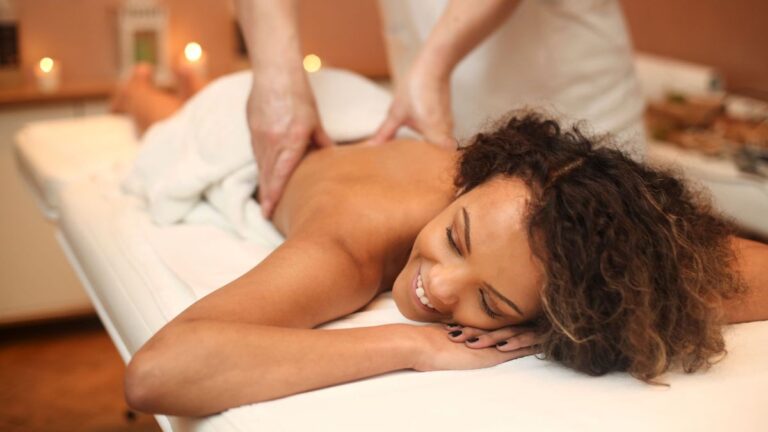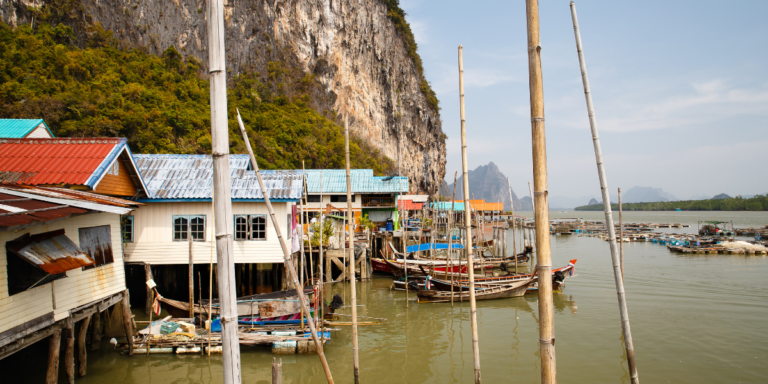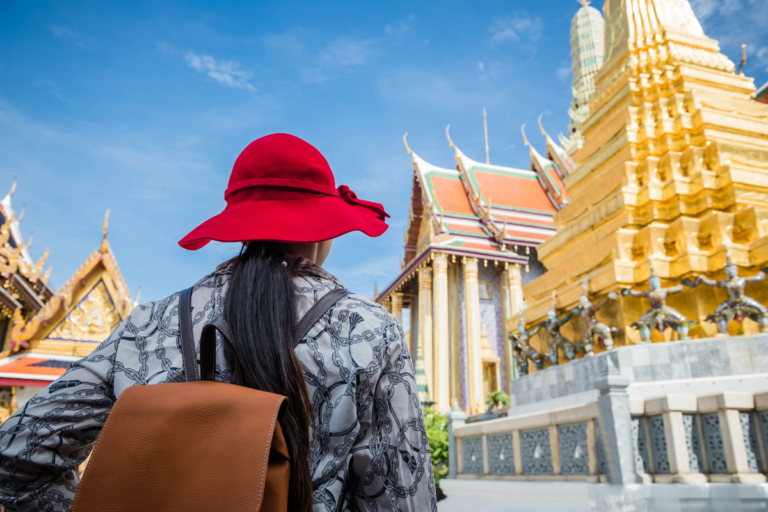Thai Massage in Thailand
If you’ve spent some time in Thailand, you’ve seen massages everywhere – legit ones and eyebrow-raising ones. Moms massaging babies, teens and grandparents getting in on the action, and even motorcycle taxi drivers exchanging rubdowns while waiting. And guess what? Foot massages right on the sidewalk. It’s a massage extravaganza out there!
Origins of Thai Massage
Travel back over 2,500 years to India – that’s where the roots of therapeutic massage began. Then, Thai-bound Buddhist monks brought this wisdom to Thailand, making it a temple tradition alongside herbal healing. The genius behind this? Supposedly, it’s none other than the Buddha’s own healer, Shivaka Kumar Baccha.
Even now, the top place in the world of this healing craft is the school at Wat Pho in Bangkok. But wait, there’s more – people hungry to master the soothing Thai touch, both locals and adventurers from abroad, flock to Chiang Mai. This city’s got a rising count of schools, some more solid than others, teaching northern massage techniques.
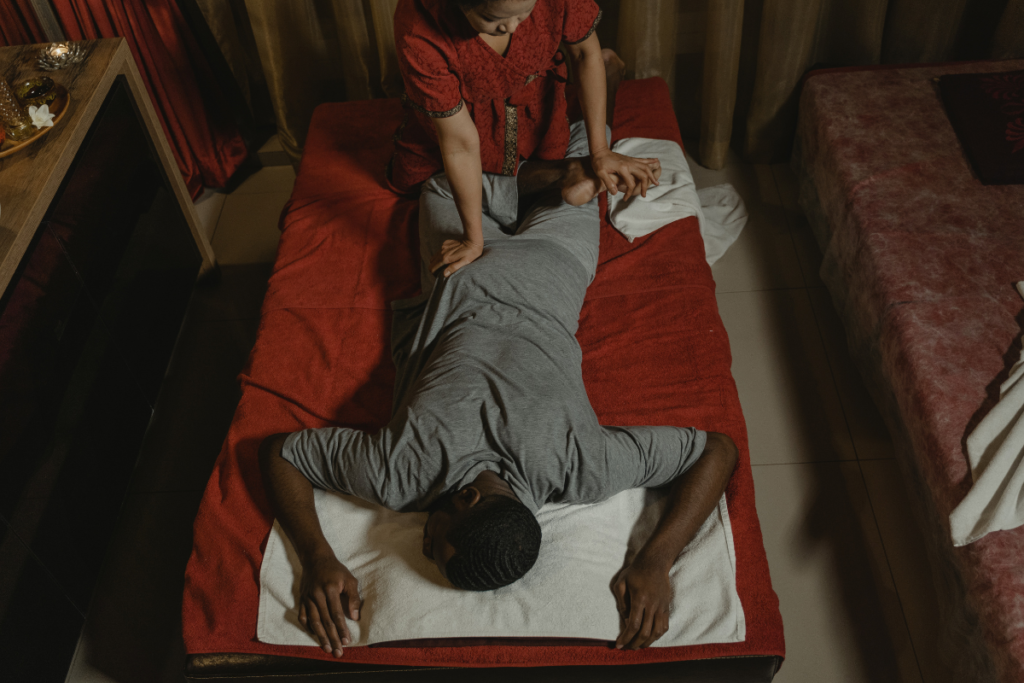
Traditional massage is mostly a female domain, but it’s also a prime gig for those without sight. According to Aree Sanyaluck, a Chiang Mai massage guru, ladies can knead anyone, no matter their age or gender. However, male masseurs with eyesight might get a little too captivated by what they see. Blind masseurs can zone in better and bring a cleaner focus to the table.
Where Can You Find Massage
Thai massage is not solely confined to stationary parlors. Roving practitioners stroll along beaches frequented by tourists to offer rubdowns. Thai Airways provides massages in-flight. Japanese automatic massage chairs chew coins in airports and shopping centers, offering welcome relief for weary shoppers. Petrol stations along major inter-provincial highways give quick rubdowns to tired drivers. And then, of course, there’s the toilet massage.
Newcomers going for a quick stand-up pee in a Thai restaurant or nightclub may be literally taken aback when suddenly a hot towel is placed on their neck and an attendant starts massaging their shoulders. This can easily result in wet pants or a slippery floor. If you don’t fancy this intimate therapy, just wink off and say “No massage”. However, after a few drinks too many, a quick kneading can work wonders and wake you up. Don’t forget to tip.
You can find Thai massage practically everywhere:
- Spas and Wellness Centers. Urban areas like Bangkok, Chiang Mai and Phuket boast numerous spas and wellness centers that offer authentic Thai massages alongside other treatments.
- Traditional Massage Parlours. These are scattered throughout cities and towns, often with signs advertising their services. Look for well-established and reputable parlors.
- Temples. Wat Pho in Bangkok is a renowned hub for traditional Thai massage. Temples in other regions may also offer massage services.
- Beach Resorts. Coastal destinations like Pattaya, Krabi, and Koh Samui often feature massage services on the beaches or within resort premises.
- Markets and Streets. In many tourist areas, you’ll find street-side stalls and pop-up massage spots luring in weary travelers.
- Hotels and Guesthouses. Many accommodations, from luxury hotels to budget guesthouses, have in-house massage services or can recommend nearby places.
- Training Schools. If you’re interested in learning Thai massage, consider enrolling in a reputable training school. Chiang Mai is known for its massage schools.
- Community Health Centers. In some rural areas, you might find local health centers or co-operatives offering traditional massages as part of holistic healing practices.
Remember to do your research and choose a place that aligns with your preferences for cleanliness, professionalism, and authenticity. Below, we will describe all things you should consider when choosing a parlor.
What to Expect
Mention Thai massage to any outsider and you’re likely to get a knowing wink. Thailand indeed has two massage cultures, one with clothes on and one without. Unfortunately, the latter is what the country is best known for and this image also somewhat limits the potential of the genuine service. Visiting an establishment offering ‘ancient massage’ will likely involve stretching muscles, loosening joints, and potentially painful acupressure along the 10 invisible energy lines.
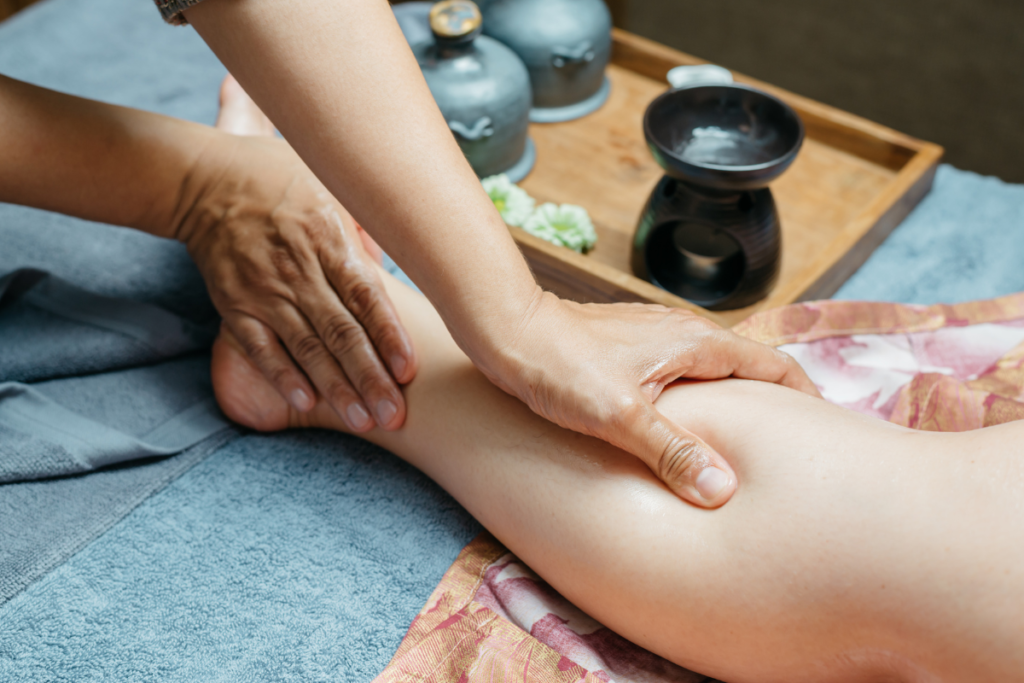
But behind the grand entrance doors of a ‘massage’ parlor, a world of different pleasures awaits the almost exclusively male clients. Many a drinking night among groups of friends may end with a visit to ‘Pandora’, ‘Aphrodite’ or ‘Poseidon’. Until pre-marital sex became more commonplace and accepted, these kinds of establishments were also popular venues for young males ‘gaining experience’ and losing their virginity. In the countryside, less classy places offering more than massage are located on the outskirts of towns.
Both types of massage typically tend to be social, with groups of men visiting together. In a genuine parlor, chatter may go on while being tended to as sessions usually take place in common rooms or with only curtains separating individual mattresses on the floor. The masseuses themselves are also eager to chat to relieve their boredom and fish for tips.
At times, the line between traditional and naughty massage is fluid. Some positions and pressure points are located very near to private body parts and hands have been known to slip or extras offered after the real session is over. Even blind practitioners may occasionally grope the wrong extremity, hoping for an extra tip or dessert order. They, of course, have the perfect excuse which will immediately quell any offense. In genuine establishments, this is completely up to the masseuse’s or masseur’s discretion and negotiated directly with the client.
Naughty massage establishments have a long history as outlets for men’s urges and their discretion makes them socially acceptable and preferable to men taking minor wives. While prostitution is technically illegal and everyone knows what goes on behind the doors of these glitzy palaces, politicians, businessmen, and even police frequent them to curry favor with clients or collect their monthly payoffs in cash or services rendered.
How Much Thai Massage Costs
The cost of a Thai massage in Thailand can vary depending on where you go and the type of place you choose. In areas that aren’t as popular with tourists, you might find massages for around 200 to 400 Thai Baht per hour (THB). In more touristy places or upscale resorts, the price could range from 400 to 800 THB or even higher.
If you opt for a high-end spa or wellness center in a big city like Bangkok, the cost might be between 800 and 2,000 THB or more. Keep in mind that if you want additional treatments or special oils, the price could go up.
The duration of the massage also affects the cost. Longer sessions might have a slightly lower hourly rate compared to shorter ones. Some places might offer extra services like access to saunas or other amenities, which will raise the total price.
How to Choose a Thai Massage Parlor
When choosing a Thai massage parlor in Thailand, it’s important to prioritize your safety, comfort, and overall experience. Here are some tips.
- Research. Before your trip, research massage parlors in the area you’ll be visiting. Look for reviews, ratings, and recommendations from reliable sources such as travel websites, forums, or guidebooks.
- Reputation. Choose a massage parlor with a good reputation. Ask locals or fellow travelers for recommendations, as word-of-mouth can often lead you to authentic and high-quality places.
- Licensing and Certification. Ensure that the massage therapists are properly trained and certified. Look for signs of legitimacy, such as licenses displayed prominently at the establishment.
- Cleanliness and Hygiene. Prioritize cleanliness and hygiene over design. The massage rooms, linens, and other facilities should be clean and well-maintained.
- Ambiance. Consider the overall ambiance of the parlor. It should be relaxing, peaceful, and conducive to a positive experience.
- Services Offered. Check if the parlor offers a variety of massage options, and whether they specialize in traditional Thai massage. This indicates a commitment to preserving the authenticity of the practice.
- Communication. Make sure that there is clear communication between you and the staff. They should be able to understand your preferences and any health concerns you may have.
- Price Transparency. Confirm the prices of the services upfront to avoid any misunderstandings or surprises later.
- Privacy. Ensure that the massage rooms provide sufficient privacy and that you are provided with appropriate draping during the massage.
- Gender Preference. If you have a preference for a male or female therapist, make sure to communicate this when booking your appointment.
- Location. Consider the location of the massage parlor. It should be in a safe and easily accessible area.
- Availability. Check if the parlor requires advance booking, and inquire about their availability to avoid disappointment.
- Duration of Massage. Inquire about the duration of the massage and any additional services that may be offered.
- Personal Comfort. Prioritize your own comfort. If at any point you feel uncomfortable or the experience doesn’t meet your expectations, don’t hesitate to communicate or leave.
- Avoid Solicitation. Be cautious of parlors that seem to offer more than just massage services, as they may be involved in illegal activities.
- Local Customs. Familiarize yourself with local customs and etiquette to ensure a respectful and positive experience.
Indeed, like so many aspects of life in the Land Of Smiles, massage, just like the smile itself, is ambiguous and therefore socially safe.

